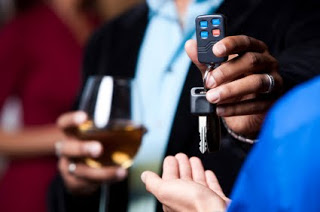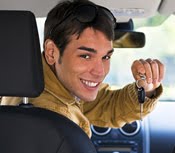Monthly Archives: December 2011

Social Host Liability Laws
December 29, 2011
As the New Year approaches and parties are being planned, hosts should be aware of their liabilities and responsibilities when it comes to serving alcohol.
Every state has some form of a little known law known as Social Host Liability Laws. Most of these laws are sub-chapters of “Dram Shop” laws. Dram shop laws are those laws that set out the responsibilities and liabilities for businesses such as bars and restaurants that regularly serve alcohol. Social Host laws however refer to the responsibilities and liabilities for a home owner or party host.
In most states the Social Host laws refer primarily to a homeowner who knowingly serves alcohol to a minor. While most responsible adults would never consider serving alcohol to a minor, a surprising number of adults either actively serve alcohol at parties attended by minors or turn a blind eye when their teens are hosting a party where alcohol is served. A recent article in the Brockton, MA Enterprise cited a survey conducted by Hingham High School where students were asked if they had attended parties where parents allowed teens to drink. More than 25 percent of freshmen and juniors at the school answered that they had attended such parties – an increase of 30 percent since 2008. A similar study at seven schools in Concord MA revealed that 27 percent of the students had attended parties where parents allowed teens to drink.
Social Host laws also hold parents criminally responsible even if they were unaware that the teens had sneaked the alcohol in. A Stanford professor who recently hosted a party for his son and friends specifically stated that no alcohol was allowed. Apparently, without the professor’s knowledge, some of the teens brought alcohol to the party and police showed up around 11:00 pm to investigate. The professor was charged with 44 counts of contributing to the delinquency of a minor – one for each teen at the party.
While there are separate laws concerning supplying alcohol to a minor, Social Host laws go further and hold the host both criminally and civilly liable if one of their guests causes injury to a third party. Some Social Host laws also prohibit serving alcohol to someone – teen or adult – who has a known drinking problem. Other states hold the host liable if they provide keys to an intoxicated adult who went on to injure a third party in a collision.
Parents who have the idea that they would rather have their kids drinking “safely” at home rather than out on the street need to remember their responsibility to be “Be A Parent, Not A Pal.” For hosts of adults, they should also be aware of their responsibilities and remember that old adage: “Friends Don”t Let Friends Drive Drunk.”To prevent one of your guests from leaving a party while intoxicated, a host has several options:
- Take the car keys from your guests as they enter and plan on them spending the night.
- Call a cab for your guests.
- Be aware of services provided by cab and towing companies or public transportation agencies that provide free or low cost rides on New Year’s Eve.
- Be a really good host, remain sober and be the designated driver for your guests.
For more information on Social Host laws in your state, visit: http://www.socialhostliability.org/
Have a safe and a happy New Year.

10 Most Confusing Traffic Signs
December 27, 2011
We all know that traffic signs do an important job: they tell us what exactly we can or can’t do on the road. But what if the signs were confusing? Sometimes this leads to funny stories afterwards, other times it leads to tragedy, as a misunderstood sign may sometimes lead to crashes.
These signs, wherever state they may show up, must be approved by the Manual on Uniform Traffic Control Devices (MUTCD). They create the standard by which all signs could be installed, maintained, and managed by road managers everywhere. The MUTCD is published by the Federal Highway Administration (FHWA).
Here then, is a list of some of the more … confusing traffic signs that are currently out there.
Yield – The red upside-down triangle sign, or sometimes, a simple verbal instruction to “YIELD”? It’s surprising just how many people get confused with this sign. The best way to describe it is it’s like a lighter version of the STOP sign. When faced with this sign, motorists should stop, give way to vehicles from another approach and then enter an intersection. These usually appear in smaller roads that don’t get enough traffic that they don’t necessarily need a STOP sign.
Runaway Vehicles Only – But what if you weren’t running away? This sign signifies that a runaway device is installed in an area. This is usually for trucks that have lost control — the device is usually a patch of road with sand or gravel, which helps vehicles come to a safe stop. The gravel or sand allows the momentum of the big vehicle to dissipate, allowing for safe stopping.
This Side of Sign – This sign signifies that something is allowed on “this side” or the side where the sign is installed. A variation of this sign may say “Parking This Side of Street.” This means that one may only park on that specific side and parking elsewhere may give you a parking ticket.
To Request Green Wait On [Bicycle symbol] – Blame it on confusing wording. This sign is supposed to give bikers a green light. This sign should be used in conjunction with traffic actuators that are adjusted to the amount of metal a bicycle has. If you’ll notice, there is a vertical line going on the top and bottom of the bicycle symbol. This means that bikers should position themselves in the designated marking for them to be detected by the actuators, giving them a green light. Some people confuse this as waiting for bicycles to ride by until they can get a green light.
Look <—-> – Looking left-to-right? Isn’t that what parents and preschool teachers teach kids before crossing the road? This sign is usually located near railways, signifying that motorists should be on the lookout for trains from both directions.
Truck Rollover – Nope this sign doesn’t signify the truck-wheelie lane — it only means that there is a slope nearby that truck drivers should be aware of, since there’s a big tendency for their vehicles to rollover.
Circular Intersection – Though it bears a striking resemblance to the recycling sign, this sign simply signifies that a circular intersection is coming up. Some circular intersections are different. In some cases, the entering vehicles have the right-of-way, while the vehicles inside the circle must yield. Sometimes this is reversed, so drivers have to do a bit of research before they go right through.
Stop Ahead – Stop vertically? No — this is simply a sign that signifies that there will be an oncoming stop. A sign for a sign, perhaps?
9% Grade – The roads aren’t trying to quantify your reading level or your abilities with math. This only means that there is an oncoming 9% Grade slope. Slopes on the road are measured in grades: consider that 9% is 9-feet off a hundred. It means that elevation may change from 5 (5% Grade) to 9 (9% Grade) feet.
DIP – Motorists have to wonder: how exactly are they going to “dip” their cars? This simple sign that says “DIP” means that there will be a dip in the road: parts of the road may go down, and then elevate right back up again.
Having trouble with learning the Roads of the Road and Traffic Signs? Take a DMV Practice Test to become an expert and pass your DMV written exam the first time.

Tips for Safely Changing Lanes During your Road Test
December 14, 2011
While taking your road test, the examiner may ask you to change lanes. Changing lanes is not a simple operation and the examiner will be looking to see if you follow all of the proper procedures to ensure that you change lanes safely.
Here are some tips on how to safely change lanes:
Assess the situation on the road ahead. Are there other vehicles trying to merge into your lane? Are there pedestrians ahead who are about to cross? Should you even change lanes? A big thing to look out for are vehicles in the lane you are about to change into flashing their brake lights or slowing down, it might indicate that there’s trouble in that lane and that changing lanes wouldn’t be worth it.
Use the rearview mirror to check motorists behind the vehicle. Check all of your mirrors before changing lanes. Is anyone behind you or in the far lane preparing to move into the lane you want to enter? Are there vehicles speeding up to get in on the lane you’re trying to change into?
Make a habit of always signaling other drivers about what you’re about to do on the road. Letting other motorists know your intentions will keep both you and them safe. This is especially true for changing lanes – drivers behind you have to make their driving decisions based on what you do. Make a habit of always giving signals for everybody’s benefit.
Check your blind spot before moving in. Before changing lanes, quickly turn your head with your chin over your shoulder to check your blind spots. It’s amazing how quickly a vehicle can move up and totally disappear in your blind spot.
When it comes to intersections, only change lanes before or after passing them. Remember, it is illegal to change lanes within 100 feet before or after an intersection.
For more practice consider taking a simulated behind-the-wheel online prep course offered through OfficialDMV.com.
